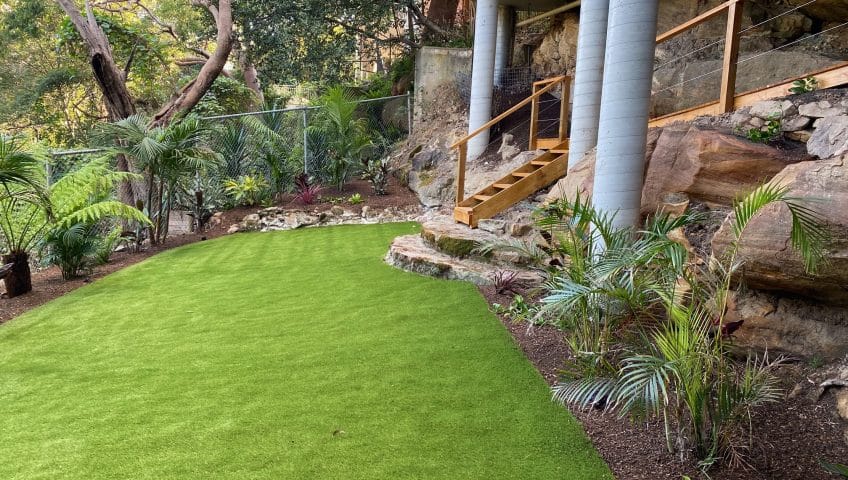The warm weather stimulates plants to emerge from their winter hibernation and bloom with new growth, making it a beautiful time to be in the garden. Because so many plants thrive in the spring, it’s the ideal time to plant some flowers to liven up your balcony/garden or start that veggie patch you’ve always wanted!
With garden maintenance in Sydney Eastern Suburbs, you can treat your yard in the same way you would your house after a long winter by giving it a nice spring cleaning to help it get ready for the warmer months.
For residential garden maintenance, this checklist is divided into three sections: early spring, mid-spring, and late spring allowing you to plan out your garden clean-up duties and hit each part of your residential landscape maintenance services before summer arrives.

- Early Spring
Start with these tasks when you first return to your garden after the winter to get your yard ready for spring and the growing season ahead.
1. Organise your flower beds
Remove any dead leaves or other debris from the soil surface where you wish to plant annual flowers and vegetables, as well as any other debris from winter storms. Cut down last year’s withered foliage and remove protective winter mulch from around perennials and decorative grasses (hedge trimmers make it easier to give grass clumps a clean, level look). Wear gardening gloves to protect your hands from cuts and scrapes, especially while working with plants with prickly leaves like lungwort.
2. Dividing the Perennials
Just before the start of spring growth is an excellent time to divide many perennials. Dividing perennials is a cost-effective strategy to increase the number of plants in your garden or share them with friends. It’s also beneficial for maintaining the health of your existing perennials; if your plants form a huge clump, the middle can thin out after a few years, creating a bare region and dividing the clump to foster growth.
3. Adding new mulch around the perennials
Adding a fresh layer of mulch to garden beds is one of the simplest methods to make your yard look polished. It keeps the weeds at bay and helps the soil retain moisture for your plants. Spread mulch evenly around your plants with gloved hands or a rake, being cautious not to put it on too thickly around your plants, as this could lead to disease concerns. When it rains heavily or is windy, keeping the layer level helps it stay in place.
4. Perform basic hardscaping upkeep
Examine the overall state of your deck or patio and make any necessary repairs. Clean off outdoor furniture, so it’s ready for relaxing after a long day in the garden when you arrive.
5. Make a vegetable garden
Potatoes, artichokes, peas, and some lettuces are hardy chilly-season crops that sprout best in cool soil, so plant them in early spring. By early June, they should be ready to harvest.

- Mid-Spring
As additional bulbs, perennials, shrubs, and trees begin to grow and even flower, your spring landscape should begin to take shape halfway through the season. After you’ve completed most of the clean-up, you may begin adding new plants to your garden.
1. Make sure bird feeders are clean.
Some people like to take down their bird feeders in the middle of the spring and store them until autumn. If you wish to keep them up all year, now is the time to take them down, clean them, and re-fill them with fresh seed or nectar.
2. Adding new perennials and cold-hardy annuals
Before the hot summer heat arrives, newly planted perennials will need some time to settle in and establish new roots. Add a few cool-season annuals like pansies or snapdragons to your yard for instant colour. They also look great in planters on your front porch to lighten it up.
- Late spring
You can begin clearing up flowers that have already flowered in late spring. It’s also time to start seriously filling up your garden.
1. Remove dead bulbs from the garden
Remove spent blooms from spring-flowering bulbs to urge the plants to save energy rather than spend it to create seeds for the following year. Allow the foliage to die back on its own until it is fully yellow or dried out before removing it.
2. Go on a summer annuals shopping spree
Choose flats of your favourite summer annuals, such as petunias, impatiens, and zinnias; for stronger plants, choose ones that aren’t in flower yet.
Choose the right kind of garden maintenance in Sydney’s eastern Suburbs for all garden shapes, styles, and sizes. You can be assured that your investment is being nurtured, protected, and cared for by the right people.

